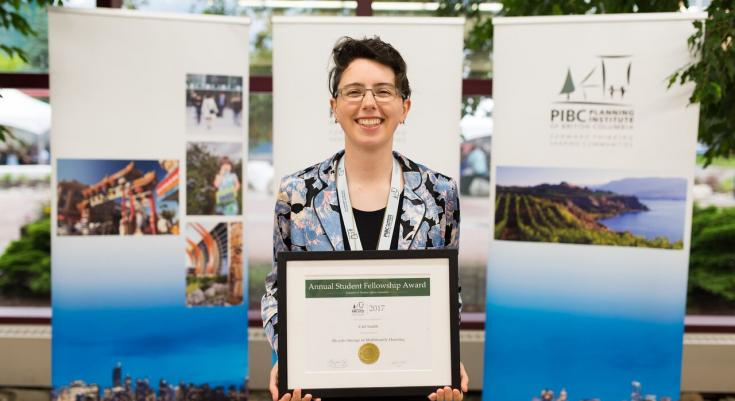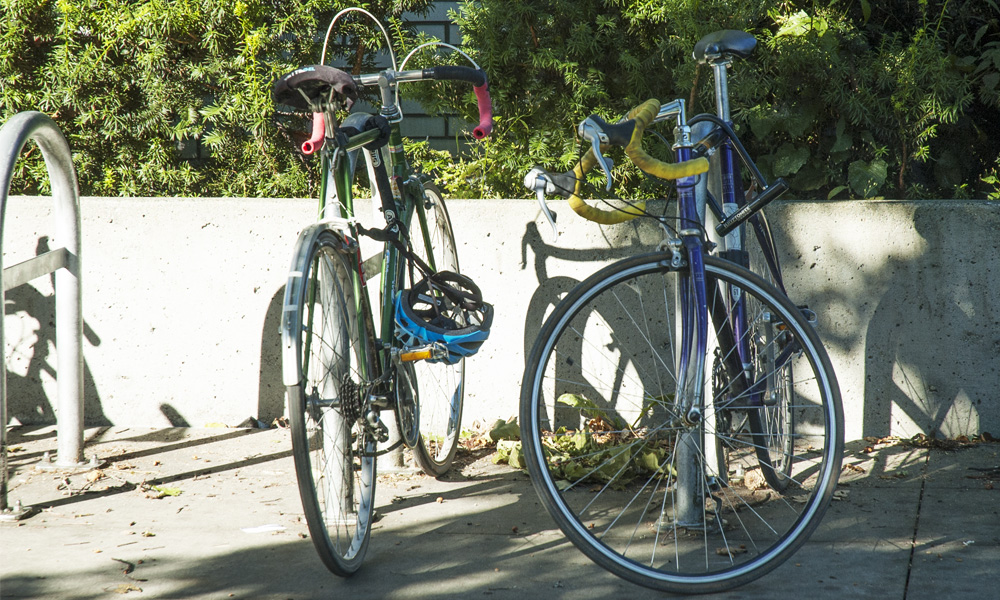
The Planning Institute of British Columbia recognizes UBC student's study of residential bicycle parking.
A UBC student’s research on bicycle storage in campus residential buildings has garnered recognition from the Planning Institute of British Columbia (PIBC).
Cail Smith, a Masters candidate at the School of Community and Regional Planning (SCARP), received one of the 2017 Student Fellowship Awards at a ceremony in Prince George on June 1, 2017. An award is given to one student from every accredited planning school in B.C.
The project, Bike Storage Facilities in UBC Residential Buildings, was conducted through the SEEDS Sustainability Program. The program matches UBC students and faculty with staff and community partners to address sustainability challenges on campus.
“Being recognized by PIBC for my research has led to some great conversations with planners and community members about the next steps for the design of bicycle parking,” said Smith about receiving the award. “I hope my research can improve the design and retrofitting of residential bicycle parking at UBC to make cycling an easy choice for UBC residents.”
For the project, Smith partnered with Campus and Community Planning, UBC Properties Trust, and Polygon Homes who were seeking recommendations on ways to improve bicycle storage as a way to broaden the appeal of cycling for campus residents.

Bicycles stored in one of the many outside bicycle racks on the UBC Vancouver campus.
Dr. Alex Bigazzi, assistant professor in the Department of Civil Engineering at SCARP and a transportation expert, provided support for Smith’s research. “Cail has taken an interesting, mixed-methods approach to examining the issue of bicycle parking in residential buildings, in particular looking at both the objective usage of the existing facilities and the residents’ perceptions of those facilities.”
Bigazzi points out that existing data on bike parking in residential buildings is very limited, which is an issue because parking has been shown to be an important factor in residents’ likeliness to bicycle for transportation.
“I expect her work will be interesting to practicing planners, developers, and researchers looking to better understand how resources put toward bicycle parking can be more effectively used,” he said.
For the study, Smith employed several research methods, including surveys and field studies with residents, to determine bicycle storage demands and suggest new design and facilities management options.
The findings will help planners and developers to craft bicycling parking guidelines and green building design standards that are in sync with resident’s needs.
Recommendations included a need for increased security, such as improved lighting and close proximity to high traffic areas, parking for children’s bikes, and outlets for charging electric bicycles.
Penny Martyn, Manager of Green Buildings for Campus and Community Planning said: “the project was well executed and provided detailed findings, we will use the research findings to help inform the Green Building Plan and improve policy on bike parking in the UBC neighbourhoods.”
Read Smith’s report and others like it in the SEEDS Sustainability Library.